The Martyr of Reason
On Saturday evening, December 31, 1785, the eminent Enlightenment philosopher Moses Mendelssohn left his house to deliver a manuscript. He had finished it on Friday afternoon but, as an observant Jew, Mendelssohn waited until the Sabbath concluded to bring it to his publisher. So, at nightfall, he rushed out into the cold Berlin air without waiting for a carriage or stopping to put on a coat, though his wife Fromet begged him to do so. The manuscript he held was entitled To Lessing’s Friends, and it was a pained yet characteristically elegant response to a critic named Friedrich Heinrich Jacobi.
Mendelssohn himself was the most famous of Gotthold Ephraim Lessing’s friends, since their close relationship was widely taken to symbolize the religious tolerance and social possibilities of the German Enlightenment. Lessing had died in 1781, and Mendelssohn had intended to write a biography or memoir of his friend. But before he could do so, Jacobi had written to him with a shocking revelation: A few months before he had died, the great Enlightenment dramatist, critic, and man of letters had confessed to him that he knew no philosophy to be true but Spinoza’s hen kai pan (“all is one”). This was, if true, scandalous. The “accursed Spinoza” was still an anathema in the 18th century. His denial of a transcendent deity and his teaching of the unity of God and the world (Deus sive Natura) was held to be the philosophical expression of a thoroughgoing atheism. For Jacobi, Lessing’s Spinozism showed that the moderate Enlightenment endorsed by Mendelssohn and his circle was philosophically superficial and both politically and theologically dangerous. When carefully thought through, the rational religion of Mendelssohn, Jacobi alleged, collapses into nihilism (a term that Jacobi himself coined).
Mendelssohn and Jacobi corresponded with increasing heat and then in 1785—in what Mendelssohn regarded as an unforgivable breach of etiquette—Jacobi published their exchange with his own commentary under the title Concerning the Doctrine of Spinoza in Letters to Mr. Moses Mendelssohn. With the public disclosure of Lessing’s confession, Jacobi launched what has come to be known as the Pantheismusstreit (the Pantheism Controversy). On the face of it, what Jacobi had initiated was a quarrel over the intelligibility and desirability of the moderate Enlightenment. Yet Mendelssohn understood that Jacobi’s challenge was not just directed at his circle’s intellectual project but also at what their confidence in reason and rational theism endorsed—religious toleration and increased sociability between Christians and Jews. Mendelssohn perceived in Jacobi’s challenge a not-so-hidden agenda—it was yet another attempt to push him into the bosom of Christianity. By publicly exposing Lessing’s professed “Spinozism,” Jacobi was, in truth, undertaking an assault upon Mendelssohn’s “Judaism.”

Mendelssohn returned from his publisher feeling ill, and never recovered. He died a few days later on January 4, 1786, at the age of 56. His funeral was attended by hundreds of mourners, Jewish and Christian; shops and businesses in the city were closed; newspaper articles and letters eulogized the man who stood as a symbol of the new age and a casualty of the fight against the forces of reaction, fanaticism, and intolerance. As Shmuel Feiner writes towards the end of his newly-translated biography, “In the eyes of his admirers he was depicted as a martyr of the Enlightenment who gave his life for its principles, and as a victim of the plot laid against him by his enemies.”
Indeed, Mendelssohn’s public image as the model of the cultured, accomplished Jew and a martyr to the Enlightenment vision of reason, tolerance, and humanitarian politics was arguably more important than his contributions to German philosophy or the renaissance of Hebrew literature. Mendelssohn’s “Jewish and Christian contemporaries alike,” Feiner reminds us, “earmarked [sic] him as the man who could lead the Jewish transition from the old world of the ‘ghetto’—of cultural and social isolation—to the new world of Europe.” Yet, within a century of his death, counter-images emerged to challenge this heroic myth. In conservative quarters, Mendelssohn was denounced for unleashing the destructive forces of modernity: challenges to rabbinic authority, the disintegration of traditional community, social permissiveness, assimilation, and conversion. (It did not go unnoticed by his detractors that four out of his six surviving children eventually converted to Christianity, and that his grandson, the famous musician Felix Mendelssohn Bartholdy, was brought up Lutheran.) On the other side of the religious spectrum, liberal Jews claimed that Mendelssohn’s reforms failed to go far enough, charging him with sentimentally clinging to tradition rather than articulating a real reform of Judaism. Later, Jewish nationalists such as Peretz Smolenskin castigated Mendelssohn for undermining Jewish national consciousness.
In addition to Shmuel Feiner’s readable volume in Yale’s “Jewish Lives” series, we now have Michah Gottlieb’s challenging new study, Faith and Freedom: Moses Mendelssohn’s Theological-Political Thought. Both books provide material for rethinking the German philosopher and Jewish enlightener.
Though it neither breaks new ground nor incorporates the most recent scholarship, Feiner’s Moses Mendelssohn serves as a useful introduction to this complex figure, and fills a longstanding need for a short, accessible biography. (In his nearly 900 pages magnum opus, Alexander Altmann filled the need for a definitive biography for the foreseeable future.) A scholar of early modern Jewish history and author of several seminal works on the subject including Haskalah and History: The Emergence of a Modern Jewish Historical Consciousness and The Jewish Enlightenment, Feiner seeks to recover “the historical Mendelssohn” by considering the philosopher’s achievements and limitations within the social, economic, and political situation of the Jews of Berlin in the mid-18th century. “To scrutinize Mendelssohn’s soul,” Feiner writes, “is to discover a tragic tension between, on the one hand, the Enlightenment’s liberal fighter, who took aim against religious fanaticism, political oppression, and superstition in the name of reason, morality, and humanism, and, on the other hand, the sensitive, vulnerable man who felt helpless in the face of invincible forces of what he called ‘the specters of the dead.'” In Feiner’s telling, Mendelssohn’s life vividly demonstrates the possibilities and limitations that Jews encountered at the dawn of the age of Emancipation.
The son of Menachem (Mendel) Heymann, a Torah scribe, synagogue treasurer, and teacher,
Moses Mendelssohn was born in Dessau on September 6, 1729. His mother, Bella Rachel Sarah, was a descendent of Rabbi Moses Isserles of Crakow, author of the great Ashkenazi supplement to Rabbi Joseph Karo’s Shulchan Arukh. She was also related to Moses Benjamin Wulff, one of Dessau’s most illustrious Jews, and her son was most likely named after these two prestigious relatives. In Dessau, the young Moses received a traditional Jewish education, studying under Rabbi David Fränkel. He might have grown up to become an eminent rabbi himself, but in 1743, at the age of 14, the talented pupil followed his teacher to Berlin, where Fränkel had been appointed Chief Rabbi.
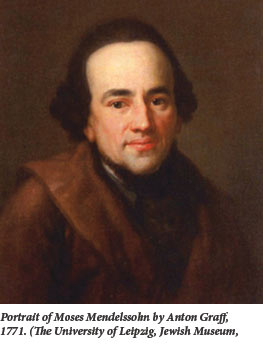
In Berlin, Mendelssohn would be exposed to vistas of culture unheard of in Dessau. Under the enlightened rule of Frederick II (“the Great”) of Prussia, Berlin was fast becoming a leading center of European culture. But “enlightenment” first came to Mendelssohn in a distinctly Jewish form. Mendelssohn fell under the tutelage of Israel Samoscz, a Galician scholar who was engaged in the recovery of the medieval Jewish philosophical tradition, penning commentaries on such works as Yehuda Halevi’s Kuzari and Bahya ibn Paquada’s Duties of the Heart. Samoscz introduced the young savant to Maimonides, whose monumental philosophical work, The Guide for the Perplexed, had recently been republished. (Mendelssohn would later claim that his hunchback was a legacy of his long hours bent over studying The Guide).
His mind now attuned toward speculative topics, Mendelssohn began to associate with a group of young Jewish intellectuals who fed his interest in philosophy and helped introduce him to the study of classical and modern languages. Soon, the son of Dessau’s Torah scribe was immersing himself in the works of Newton, Locke, Leibniz, and Wolff. Though largely self-taught in these subjects—he never attended a university—the young Torah scholar turned early maskil was on his way to becoming a leading light in German letters.
Mendelssohn’s nascent philosophical career was helped along by his growing friendship with Lessing, to whom he was introduced in 1753, at the age of 24. In 1755, he published his Philosophical Dialogues and On the Sentiments, and, in 1763, his essay “On Evidence in Metaphysical Sciences” was awarded first prize in the Prussian Royal Academy of Sciences competition (beating the submission of a young Immanuel Kant). His philosophical dialogue Phädon, or on the Immortality of the Soul was published in 1767 to international acclaim and became a bestseller. In it, Mendelssohn updated Socrates’ (or rather Plato’s) arguments for the immortality of the soul, earning himself the moniker “the German Socrates.” In 1771, Mendelssohn was elected a fellow of the Royal Academy (although the Academy’s decision to award a Jew its highest honor was ultimately vetoed by King Frederick the Great).
Yet, to many, the man himself remained a perplexity. To the astonishment and consternation of many of his enlightened interlocutors, Mendelssohn maintained his commitment to the faith of his fathers and strove to lead his fellow Jews out of superstition and civic exclusion into a fruitful engagement with modern culture. Working in concert with other members of the emerging Haskalah, he cautiously sought to promote a Jewish renaissance, advocating the revival of Hebrew, translating the Pentateuch into German, and editing a commentary on it, the Bi’ur. On account of his standing in the European Republic of Letters, Mendelssohn was frequently asked to intercede by Jewish communities of Berlin and beyond, which he did often and effectively. Nonetheless, he came under suspicion of rabbinic authorities for his seemingly heterodox opinions and activities.
Mendelssohn’s activities made him the target of a number of public challenges, the Jacobi affair being just the last and most tragic. It was in the course of these controversies that Mendelssohn clarified his conception of Judaism and its place in modern society. In 1769, Johann Caspar Lavater, a young Swiss Lutheran pastor inspired by millennial hopes, translated a section of Charles Bonnet’s work, La palingénésie philosophique, ou idées sur l’état passé futur des êtres vivants, and published it with a dedicatory epistle to Mendelssohn. Encouraged by Bonnet’s arguments in support of the Christian revelation, Lavater challenged Mendelssohn to accept or refute Christianity.
In his response, Mendelssohn stressed the need of a member of a religious minority to act prudently in such matters, while insisting that his philosophical studies had not led him away from his belief in the truth of his religion. Mendelssohn declined to engage Bonnet’s arguments in favor of Christianity, writing simply that he did not find them compelling. Moreover, he argued that the religious truths proclaimed by Judaism—the existence of God, providence, reward and punishment—were identical to those of natural religion, truths accessible to the unassisted human reason of all people at all times in all places, and demonstrated by modern philosophy. In Judaism, as opposed to Christianity, revelation was of law, practices to follow rather than dogmas to be believed. And, since it restricted the ceremonial law to those of the Jewish faith and did not seek out proselytes, Judaism was fundamentally a religion of tolerance.
Mendelssohn’s most famous and enduring work, Jerusalem, or on Religious Power and Judaism, was also composed in response to a public challenge. In 1782, publicly joining the movement for the granting of civil rights to the Jews, Mendelssohn published a preface to a translation of the 17th-century Dutch rabbi Menasseh ben Israel’s work Vindiciae Judaeorum advocating for the Jews’ readmittance into England. In this text, Mendelssohn argued, among other things, that Jewish authorities ought to relinquish their power of excommunication. Soon, an anonymously written pamphlet entitled “The Searching for Light and Right in a Letter to Mr. Moses Mendelssohn Occasioned by his Remarkable Preface to Menasseh ben Israel” charged Mendelssohn with clandestinely abandoning Judaism. According to its anonymous author, Judaism is “ecclesiastical law” backed by coercive force. If Mendelssohn rejects Judaism’s “ecclesiastical power,” the author inquired, is he not rejecting Judaism’s very foundation? And if he is rejecting this foundation, how can he still consider himself a faithful Jew? In short, if Judaism is law, did this not entail that the Jews could only enter into modern society by relinquishing Judaism?
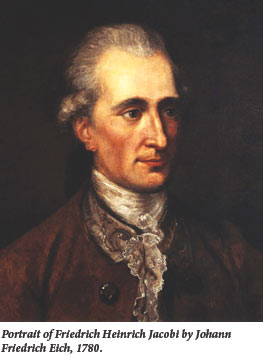
Mendelssohn took up the challenge of “the Searcher” to stake his position on the theological-political problem, the tension between claims of the state and the claims of religious belief. Jerusalem is both a manifesto for religious toleration and a bold articulation of Mendelssohn’s unique understanding of the Jewish religion. The treatise opens with a discussion of the relationship between the state and religious authority in conversation with Hobbes and Locke (and Spinoza, who, though not engaged directly, haunts Mendelssohn’s treatise.) The conflict between the two, Mendelssohn maintained, was more illusory than real. Rather than subordinating the church to the state (as in Hobbes and Spinoza) or attempting an (impossible) separation of realms (as in Locke), Mendelssohn argued that if the nature of the state and the church are correctly understood, there is no tension, that the two institutions would work in concert to promote the temporal and eternal happiness of human beings.
In the second part of Jerusalem, Mendelssohn pivoted to develop his conception of Judaism. Judaism, Mendelssohn maintained, proclaimed no metaphysical truths other than those of natural religion. What distinguished it from other positive religions was its revealed law and the historical truths taught by the Torah. And, although Judaism was a religion of law, since the destruction of the Hebrew commonwealth this law was no longer political (that is, coercive) in nature. The rituals prescribed by the law, however, retained the unique ability to promote and preserve the metaphysical truths of natural religion. In Mendelssohn’s view, Judaism was therefore the most reasonable of religions, distinctly suited to the modern, enlightened era.
Jerusalem had two audiences: Mendelssohn’s fellow Enlightenment intellectuals and his fellow Jews. Mendelssohn had hoped that his conception of Judaism would be embraced by his co-religionists. But his depiction of Judaism as a non-coercive religion of law found few takers. In subsequent years, Jews interested in forging a synthesis between Judaism and modern culture did so in doctrinal terms. Ironically, while it had little effect on future Jewish reformations, Jerusalem had a significant influence on philosophers such as Immanuel Kant and G.W.F. Hegel in their assessments of Judaism as a one-sidedly legalistic and political religion.
Feiner is especially good at positioning the development of Mendelssohn’s thought within the contours and challenges of his times: an emerging Jewish bourgeoisie, with its attendant interest in salons, modern education, fashion, and the arts; a rabbinic establishment still reeling from the aftereffects of the Sabbatean debacle, suspicious of change, and jealous of its waning authority; the increasing prestige of liberal ideas that would sponsor the extension of new opportunities to Jews.
Throughout, Feiner also provides a fascinating glimpse of Mendelssohn’s private life—his close friendships with fellow intellectuals such as Lessing, his courtship of Fromet Gugenheim, the births and deaths of his children, and the long illness that sidetracked his philosophical career. Feiner is keenly attuned to the tragic dimension of Mendelssohn’s life: despite the great renown that he achieved during his lifetime, Mendelssohn was always subject to prejudice and humiliation, which he endured publicly with an almost superhuman poise, and privately, in letters to his confidants, with a disappointment and frustration that sometimes bordered on despair. As if to underscore this sad aspect of Mendelssohn’s life, Feiner frames his biography with an incident in which his family was taunted by a gang of youths with cries of “Juden! Juden!” and a hail of stones. Distressed and helpless, the philosopher renowned across Europe could only mutter to himself, “People, people, when will you stop this?”
Although Mendelssohn was regarded as an icon by a younger generation of Jewish enlighteners, Feiner judges that his role in “the cultural project of modernization of the Jews” was in the end a marginal one. The author of Jerusalem neither led a movement nor founded a lasting ideology. He did not stand at the vanguard of the struggle for emancipation. Nor did he advocate for any significant modifications in Jewish law or practice. (Even as he was suspicious of rabbinic authority, Mendelssohn lived according to the strictures of halakha.) “The story of his life,” Feiner concludes,
gives expression to the dilemmas posed to the Jews by the ‘modern condition’ . . . he exemplifies the rise of a modern Jewish intellectual elite no longer identical to the rabbinical elite, and not restricted in its knowledge to traditional Jewish sources. His thought marks the beginning of a liberal Jewish philosophy seeking to promote such values as the love of man, religious tolerance, and a multicultural society that interprets Judaism according to rationalistic and moral criteria.”
In the end, Feiner regards and celebrates Mendelssohn as “the first real Jewish humanist.”
In Faith and Freedom: Moses Mendelssohn’s Theological-Political Thought, Michah Gottlieb delves deeply into the philosopher’s complex relationships with his predecessors (Maimonides and Spinoza) and into the nature of his quarrel with Jacobi. Rather than observing a contradictory thinker—a German Mendelssohn and a Jewish Moshe ben Mendel; an Enlightenment philosopher in public and an observant Jew in private—Gottlieb makes the case for the essential unity of Mendelssohn’s thought and, more daringly, for the plausibility of the humanistic religion he advocated. Mendelssohn, Gottlieb suggests, “is so firmly convinced of the truth of both Judaism and of the German Enlightenment that he simply cannot imagine a contradiction between them,” and is able to achieve such a synthesis because he approaches Judaism with the selective attitude of a theologian, rather than with the objective, critical eye of an historian.
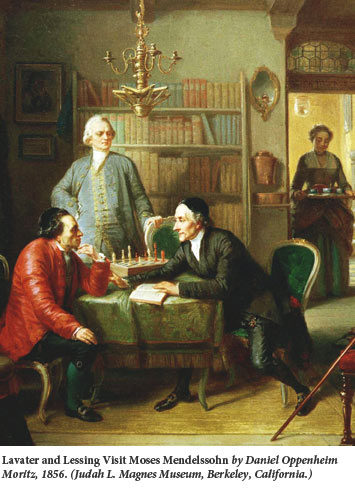
The first two chapters of Gottlieb’s rich study focus on Mendelssohn’s effort to demonstrate “the harmony between Judaism and Enlightenment philosophy” and to accommodate Judaism to the emerging political situation. Like Feiner, Gottlieb regards Mendelssohn’s youthful encounter with Maimonides as decisive in shaping his intellect; the medieval sage provided an entryway into the world of philosophy, serving not only as an introduction to philosophical thinking but also as a way to legitimate the study of “secular” topics. But taking Maimonides as a model had its limitations. Gottlieb powerfully shows how Mendelssohn, engaged by the optimistic, world-affirming spirit of Leibniz’s system, rebelled against the ascetic and elitist strains and Aristotelian doctrines of Maimonidean thought. Mendelssohn came to believe that Leibnizian-Wolffian metaphysics, in particular its stress on divine benevolence, provided a firmer grounding for biblical faith.
Gottlieb also stresses the importance of Mendelssohn’s engagement with Spinoza in his philosophical development. In his first German philosophical work, The Philosophical Dialogues, Mendelssohn attempted to recuperate Spinoza’s image. His errors were, in Mendelssohn’s account, a necessary step in the transition from Cartesianism to Leibnizianism. Spinozism was, he wrote, “a sacrifice for the human intellect, but one that deserves to be decorated with flowers.” Mendelssohn’s defense of Spinoza, his depiction of the Sage of Amsterdam as a martyr and virtuous seeker after truth, Gottlieb suggests, was strategic. He sought to co-opt the symbol of Spinoza as a Jew and as a philosopher in order to counter longstanding prejudices and “demonstrate the Jews’ capacity for participating in the collaborative effort of developing scientific and cultural knowledge.” Gottlieb’s Mendelssohn thus stands at the beginning of a tradition in modern Jewish thought that continues through Solomon Maimon, Hermann Cohen, and Leo Strauss.
The center of gravity of Gottlieb’s book, however, is his restaging of the debate between Mendelssohn and Jacobi. Following Leo Strauss’ suggestion that the Pantheismusstreit should be seen as a “theological-political debate,” Gottlieb contends that what was at stake was not simply a conflict between “reason” and “faith” but an ardent quarrel about the nature of religious faith and the good life in the modern world.
Jacobi’s strategy was to heighten the contradictions within the Enlightenment project, to demonstrate that, rather than bringing about a new era of humanism and freedom, the reign of reason results in political despotism and spiritual nihilism. Interestingly, Jacobi’s critique was cast not in the name of fidelity to tradition, but in the name of freedom and humanism, the very watchwords of Mendelssohn’s Enlightenment hopes. His attack had two prongs. The first was political. Jacobi alleged that Mendelssohn endorsed happiness at the expense of human freedom, a position illuminated by his acquiescence to political despotism (such as that of the authoritarian Prussian state). The second prong of the attack was aimed at Mendelssohn’s rationalism. Jacobi maintained that Spinoza had formulated the only rigorously consistent rationalist philosophy: human reason leads to atheism and fatalism, a conception of the world without divine transcendence or human freedom. Spinoza, the philosopher par excellence, at least had the courage to push his logic to its ultimate conclusions, as Lessing did to eventually accept them. Mendelssohn, however, did not dare to travel down Spinoza’s path. As Gottlieb writes, Jacobi argued that “by legitimating rationalism for the faithful, Mendelssohn prepares the ground for overthrowing theism since rationalism applied consistently culminates in Spinozism,” which is to say atheism. In short, Mendelssohn’s metaphysics were a muddled, halfway house to nihilism. Rather than securing religious faith by placing it on a rational foundation, Mendelssohn unwittingly weakens it.
Unassisted human reason could not, in Jacobi’s view, achieve real knowledge of God, Who is ultimately mysterious to us. The alternative to the pretensions of the Enlightenment was to recognize the fundamental limitations of human reason and take a “mortal leap” (salto mortale) into a personal faith. Such a faith—a Christian faith—suggested Jacobi, was based on a “sixth sense,” a faculty that bestowed within us a “mystical perception” of a mysterious God and of our own souls. As such, Christianity, with its irrational faith in God as a vital and loving Being was superior to Mendelssohn’s Judaism, which grasps God only abstractly, through the faculty of reason and in the trappings of our all-too-human language. It is a faith beyond the confines of mere reason that provides the very foundation for human individuality, dignity, and real freedom, as well as for the (limited) authority of reason. A life infused with such a faith and lived committed to it, Jacobi maintained, was deeper and richer and ultimately more meaningful than the so-called happy one promoted by Berlin’s Enlightenment thinkers. As Gottlieb succinctly sums up Jacobi’s complaint against Mendelssohn:
In privileging personal comfort and happiness, Mendelssohn’s bourgeois philosophy effectively reduces our humanity and makes us small, petty, ignoble men. At best we can live interesting lives with a multitude of pleasures and amusements, but we no longer live great lives, which involves the willingness to sacrifice our lives for the sake of duty.
Unsurprisingly, Mendelssohn was not convinced. On the contrary, he believed that Jacobi’s disparagement of reason and devotion to a personal, mystical faith would itself result in religious and political despotism. It would also undermine the attempt to bridge the divide between Christians and Jews, a bridge built on their mutual recognition of the truths of natural religion.
In his responses to Jacobi, then, Mendelssohn had to juggle a number of tasks. He sought to preserve Lessing’s reputation (by explaining—or explaining away—the nature of his “Spinozism”). But he also needed to defend the Enlightenment and its rational theism against Jacobi’s critique, and to challenge Jacobi’s religious enthusiasm while contrasting it to the rationality of Judaism. But, as Gottlieb elegantly demonstrates, Mendelssohn’s quarrel with Jacobi was really a struggle against Spinoza, whom Mendelssohn had defended in Philosophical Dialogues and with whom he had shadowboxed in Jerusalem. In short, Jacobi’s challenge forced Mendelssohn to grapple with Spinoza’s philosophy directly. Since Mendelssohn agreed with Jacobi that Spinoza’s doctrine was inimical to human freedom, he had to distance his rationalism from Spinoza’s and to demonstrate the latter’s philosophical flaws. Intriguingly, in the course of these arguments, Mendelssohn, citing Johann Georg Wachter’s idiosyncratic 1699 book Spinozism in Judaism or Contemporary Judaism and Its Secret Kabbalistic, Deified World, suggested that Spinoza built his philosophy from the Jewish mystical tradition. In a sense, the problem with Spinoza’s metaphysics originated from what Mendelssohn considered the irrational tendencies in the Jewish tradition itself.
Gottlieb’s analysis of Mendelssohn’s critique of Spinozism in To Lessing’s Friends and his other late text, Morning Hours, is the most dense and technical section of his book. Assuming a working knowledge of early modern philosophy, it will likely frustrate non-specialists. (It may, at times, try experts as well: the volume is very densely referenced; the endnotes take up nearly sixty pages, about a full third of the entire text. A difficulty of the format is that references to Mendelssohn’s work are tagged to the German collected edition, which makes it difficult to track exactly which text is under consideration at any given moment.) Gottlieb is a fair-minded and prudent guide through these philosophical shoals; he takes both sides of the conflict seriously (though his heart is with Mendelssohn). Yet Gottlieb’s presentation sometimes feels too tightly focused and his more provocative claims underdeveloped. For example, Gottlieb detects in Mendelssohn’s appeal to common sense a turn to a “pragmatic religious idealism,” a concept that warrants more discussion. And, while Gottlieb desires that his book “contribute to a renewed consideration of humanistic religion as a serious option today,” it is unclear if he regards Mendelssohn’s own conception of religion in general or Judaism in particular as plausible.
One wishes that Gottlieb had allowed his book to breathe more, devoting more space to evaluate Mendelssohn’s and Jacobi’s arguments, to discuss the broader context of the contest, and to offer more direct judgments regarding its outcome, reception, and significance. While Gottlieb claims that “the heart of the debate is about ethical and political issues concerning the best means of promoting human dignity and freedom in modern society,” his own presentation demonstrates how deeply intertwined these issues are with metaphysical and epistemological problems—the limits of reason, the legitimacy of religious belief, the grounding for freedom, and the proper aim of human life.
The Pantheismusstreit had a consequence unintended by Jacobi or Mendelssohn (and unmentioned by Gottlieb and Feiner): in a sense, it created more Lessings, reviving an interest in Spinoza’s work and an intelligentsia more sympathetic to pantheism. Thinkers such as Herder, Schelling, and Hegel found inspiration in Spinoza, even as they took his thought into vastly different directions. In 1835, Heinrich Heine, surveying the scene of philosophy and theology, would write, “Pantheism is the secret religion of Germany.”
Jews, too, began to reassess the legacy of the Sage of Amsterdam. The renowned historian, liberal rabbi, and theologian Abraham Geiger celebrated Spinoza as “the pioneer of a new mental and spiritual age.” Despite his hostility to the Jewish religion (or perhaps in some sense on account of this hostility), Spinoza came to be regarded as a herald of Jewish national revival. For the socialist and proto-Zionist Moses Hess, Spinoza was the true prophet of modern messianism, whose philosophy represented the “unity of the creative spirit.” Variations of Hess’ sentiments were echoed by 20th-century Jewish figures from Buber to Ben-Gurion.
Mendelssohn’s philosophy, on the other hand, faded into obscurity. His conception of Judaism fared no better. Subsequent Jewish thinkers did not adopt Mendelssohn’s solution to the theological-political problem of Judaism in the modern world. Younger generations of Jewish reformers rejected his depiction of Judaism, and, influenced by contemporary philosophical trends, sought different ways to express the “essence of Judaism,” to identify its teachings, to locate the enduring particularity of the Jewish people, and to ease their integration into the state and society.
In recent years, Jewish thinkers have directed more attention to modern philosophers such as Franz Rosenzweig and Emmanuel Levinas, whose lives featured a “return to Judaism” rather than a Mendelssohnian attempt to reconcile Athens and Jerusalem. Yet, as these two new books remind us, the fundamental questions with which Mendelssohn struggled still haunt us, albeit in a somewhat different key.
Gottlieb reminds us that a concern about the presumptions of reason, the modern bourgeois subject, and the soft comforts of liberalism was voiced a century and a half later by critics of Weimar Germany such as Carl Schmitt and the young Leo Strauss. And we are today still faced with the alternatives of commitment to a particular (and constraining) tradition (be it a faith, a political ideology, a cause), and a liberalism that allows for the cultivation of a multiplicity of human pursuits and open to competing visions of the good life. Although his philosophical teachings and conception of Judaism may no longer be compelling, there is still much to learn from Moses Mendelssohn’s noble life and philosophical texts, as these two new books demonstrate.
Suggested Reading
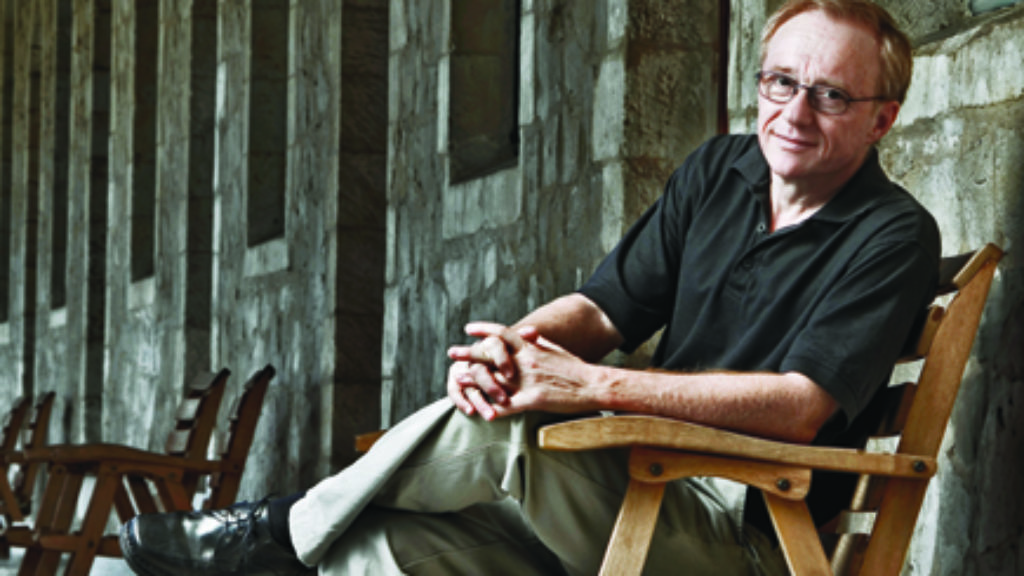
Love and War
David Grossman has for sometime been one of Israel's most talented and important writers. In many of his novels, his feeling for adolescence—one is tempted to say, his identification with it—has been so brilliantly intuitive that the imagining of adulthood has scarcely been possible. In To the End of the Land, Grossman makes his breakthrough.
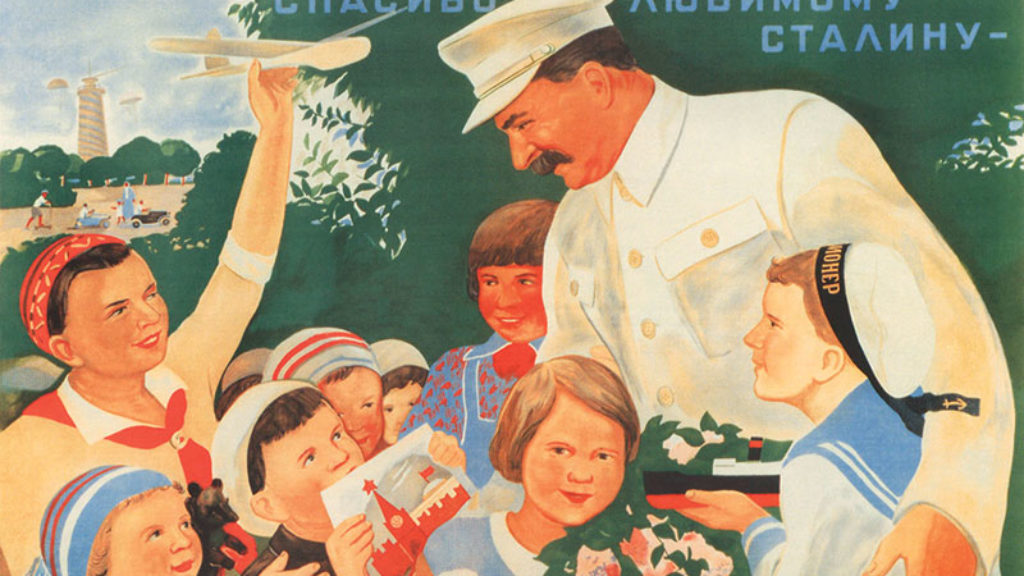
Patriotism and Its Discontents
While many Jews embraced the Russian revolutionary cause from the very beginning—four of the seven members of the first Bolshevik Politburo were Jews—the revolution did not embrace them for long.
Culture and Education in the Diaspora
After 1948, Ben-Gurion strongly urged young American Jews to make aliyah. In 1951, Hayim Greenberg, head of the Jewish Agency's Department of Education and Culture, came to Jerusalem to argue for the dignity of Jewish life in the diaspora—in Yiddish.
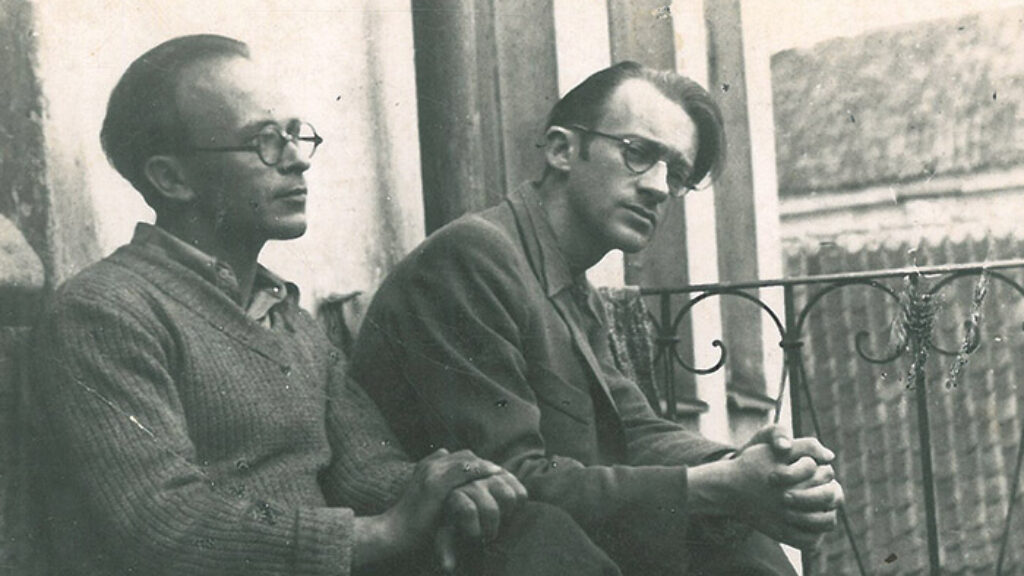
Cultural Life in the Vilna Ghetto
The great poet Abraham Sutzkever once swore an oath to serve Yiddish culture. He fulfilled his vow in ways no one could have ever imagined.
Comments
You must log in to comment Log In